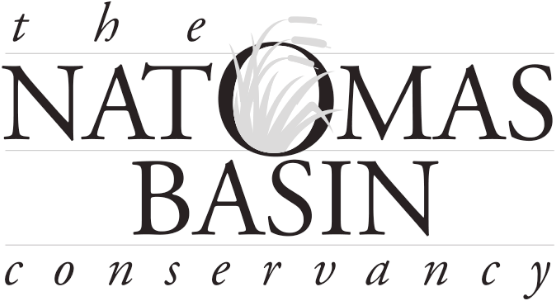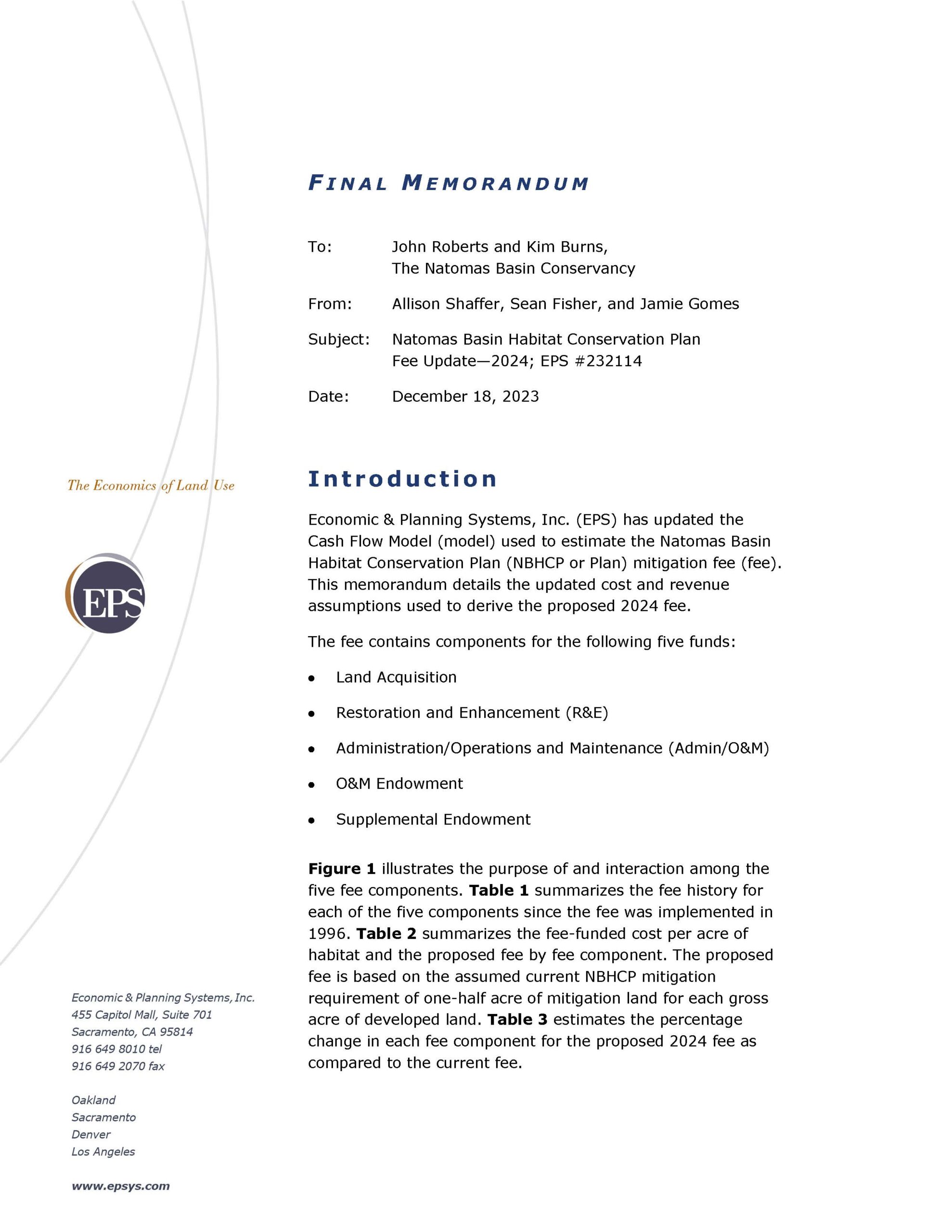Project Mitigation
Natomas Basin Habitat Conservation Plan (NBHCP)
Implementation of the Natomas Basin Habitat Conservation Plan (NBHCP) provides mitigation for urban development in the Natomas Basin by establishing a reserve system composed of managed marshes, upland habitats, and rice lands. Acceptable mitigation requires maintenance of a 0.5-to-1 mitigation ratio. That is, for each one acre of habitat disturbed, one-half acre of mitigation land must be provided for. All NBHCP mitigation land will ultimately consist of 25 percent managed marsh, 25 percent upland and 50 percent rice.
For HCP fee payers with projects in the City of Sacramento: City of Sacramento Pre-Construction Biological Protocol Checklist
A checklist related to preparing a complete pre-construction survey for a proposed urban development project in the City of Sacramento subject to the 2003 Natomas Basin Habitat Conservation Plan (NBHCP).
Understanding the NBHCP Process:
By clicking on and opening the NBHCP Flow Chart below, viewers can get a simple illustration of how the NBHCP works and what the Conservancy’s role is. By reviewing this illustration, readers will be better prepared to review and understand the project mitigation process described further below..

NBHCP Mitigation Fee
The Conservancy offers two forms of mitigation fee payment, 1) full fee, and 2) fee with land dedication.
Fee Payment — Full Fee
Full fee – For projects 50 acres or less, the full NBHCP fee would be paid and no additional consideration would be required. (Example: a 10 acre project would require NBHCP fees as follows, 10 acres times $46,009 per acre equals $460,090.)
Fee Payment with Land Dedication
Fee with land dedication – Land dedication for any project over 50 acres is required. For these larger projects, land dedicated is in lieu of paying the land acquisition portion of the NBHCP fee. (Example: a 100 acre project would require NBHCP fees as follows, 100 acres times $32,259 per acre equals $3,225,900 along with the dedication of 50 acres of land.)
The Conservancy, as directed by the NBHCP, ensures that certain conditions are met before accepting land when the land dedication option is used. The Conservancy’s Land Dedication Checklist and the NBHCP provide guidance on land acquisition criteria. The federal and state wildlife agencies must approve all land acquisitions, including land conveyed to the Conservancy using the land dedication process.
Projecting Revenues and Expenditures
Acting as the NBHCP’s “Plan Operator,” the Conservancy has developed a Finance Model that analyzes the projected revenues and expenditures of implementing the NBHCP. The NBHCP Finance Model is dependent on actual costs incurred to date, a forecast of development of the Natomas Basin, and the corresponding habitat mitigation required. Based on these assumptions, the Finance Model calculates the mitigation fee required of new development.
Preservation of all property rights that are appurtenant to the land are an important part of the land dedication checklist.
Fee Components
Land Acquisition (LA) Fee Component
This fund provides for the acquisition of mitigation lands by the Conservancy. The costs associated with land acquisition are the costs to acquire the land and transaction costs including legal costs, generally speaking. The fund also provides for a contingency in case land costs spike in any given year prior to updating the fee. Once all land is acquired in order to meet mitigation requirements, this fund will no longer be necessary.
Restoration and Enhancement (R&E) Fee Component
This fund provides for restoring and enhancing mitigation lands acquired by the Conservancy. For example, the creation of managed marsh would be provided for by the revenues generated in the Restoration and Enhancement Fund. Once all land is acquired and subsequent restoration and enhancement occurs, this fund will no longer be necessary.
Administration and Operations & Maintenance (O&M) Fee Component
This fund provides for the on-going operations and maintenance of the mitigation lands, including the costs to administer the funds collected from the mitigation fees, insurance, property taxes, water, property management, biological monitoring, etc. This fund is projected to exist in perpetuity. After year 50, the Admin/O&M Fund revenues are supplemented by interest earnings from the O&M Endowment Fund.
O&M Endowment Fund Fee Component
This fund is structured as an endowment, such that fee revenue is accumulated as principal that will earn interest income over time. The interest income is utilized to subsidize funding for the Admin/O&M Fund after year 50.
Supplemental Endowment Fund Fee Component
This fund was established in the 2003 NBHCP to accumulate revenue to allow the Conservancy to purchase up to 200 acres of land in advance of all fees being paid or to supplement annual purchases in the case that land prices spike dramatically in any given year. It is also available to use for any unexpected emergencies. Once all land is acquired in order to meet mitigation requirements, this fund will no longer be necessary.
NBHCP Finance Models
The Finance Model is intended to be a dynamic, fluid analysis of each of these funds and allows for interaction between the funds (excluding O&M Endowment Fund principal).
The NBHCP Finance Models listed below provide, in detail, all the calculations behind the NBHCP Mitigation Fee.*
*Please note: the NBHCP Finance Model helps inform the Conservancy’s annual HCP recommendations to public bodies, as is required by the NBHCP. The annual establishment of the HCP fee itself is determined by the City of Sacramento and/or County of Sutter through ordinance, and the NBHCP Finance Model’s suggested fee is guidance only. Both are required only to “ensure adequate funding” and may conclude some other amount other than that indicated by the NBHCP Finance Model is adequate and appropriate. As the Metro Air Park Habitat Conservation Plan (MAPHCP) is linked to the NBHCP with regards to the Mitigation Fee, all Mitigation Fee updates to the NBHCP apply to the MAPHCP as well.
Non-HCP and Special Projects
Non-HCP and Special Projects: On supplemental mitigation projects where mitigation ratios are not one-half to one (0.5 to 1, or 0.5:1), mitigation payments must be converted to equal the one-half to one established fee. It is very important to consult with Conservancy staff or experts when contemplating a non-NBHCP mitigation project when there is a different mitigation ratio.




